97.8 Temp: Understanding Body Temperature and Its Significance
What is considered a normal body temperature. How does body temperature fluctuate throughout the day. When should you be concerned about a fever. What are the symptoms associated with elevated body temperature.
The Basics of Body Temperature
Body temperature is a vital sign that provides crucial information about our health status. While we often hear that 98.6°F (37°C) is the “normal” body temperature, the reality is more complex. Body temperature can vary depending on numerous factors, including time of day, physical activity, and individual differences.
The concept of 98.6°F as the standard was established in the 19th century by German physician Carl Wunderlich. However, recent studies suggest that the average body temperature may be slightly lower, around 97.5°F (36.4°C).
What causes body temperature to fluctuate?
- Circadian rhythm (natural daily cycle)
- Physical activity
- Hormonal changes
- Environmental conditions
- Illness or infection
Understanding these fluctuations can help us better interpret our body temperature readings and recognize when there might be cause for concern.
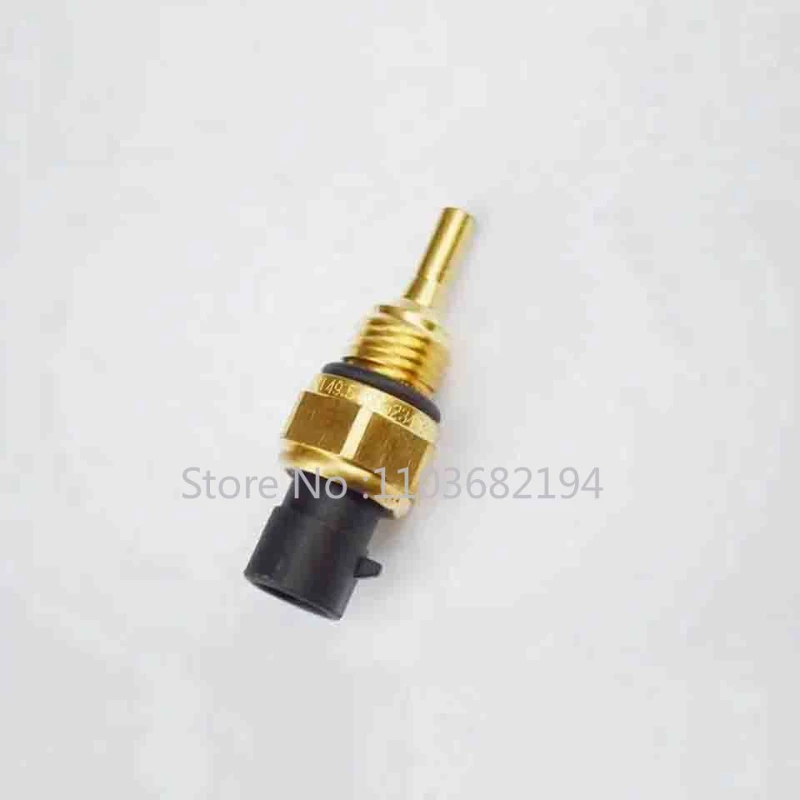
Defining Fever: When Temperature Rises
A fever is generally defined as a temporary increase in body temperature above the normal range. According to the Mayo Clinic, a rectal, ear, or temporal artery (forehead) temperature of 100.4°F (38°C) or higher typically indicates a fever.
Fevers are often the body’s natural response to infection or illness. While they can be uncomfortable, they usually serve a purpose in fighting off pathogens.
Common symptoms accompanying a fever:
- Chills and shivering
- Sweating
- Headache
- Muscle aches
- Loss of appetite
- Irritability
- Dehydration
- General weakness
Is a fever always cause for concern? Not necessarily. In most cases, fevers subside within a few days as the body successfully fights off the underlying cause. However, there are situations where medical attention may be necessary.
When to Seek Medical Attention for a Fever
While fevers are often harmless, certain circumstances warrant a call to your healthcare provider. For adults, a body temperature of 103°F (39.4°C) or higher can be a cause for concern.

You should also contact your doctor if you experience any of the following symptoms along with a fever:
- Severe headache
- Unusual skin rash
- Sensitivity to bright light
- Stiff neck and pain when bending your head forward
- Mental confusion
- Persistent vomiting
- Difficulty breathing or chest pain
- Abdominal pain or pain when urinating
- Convulsions or seizures
For infants and young children, the guidelines for seeking medical attention are more stringent due to their vulnerability to infections.
When to call the doctor for a child’s fever:
- Younger than 3 months with a rectal temperature of 100.4°F (38°C) or higher
- Between 3 and 6 months with a rectal temperature up to 102°F (38.9°C) and seems unusually irritable, lethargic, or uncomfortable
- Between 3 and 6 months with a temperature higher than 102°F (38.9°C)
- Between 6 and 24 months with a rectal temperature higher than 102°F (38.9°C) that lasts longer than one day
- 2 years or older with a fever lasting longer than three days
- Any age and seems unresponsive
It’s important to note that in infants and toddlers, even a slight increase in temperature could indicate a serious infection. When in doubt, it’s always best to consult with a healthcare professional.
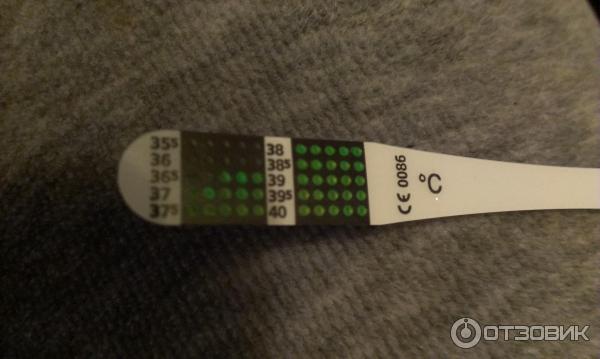
The Importance of Accurate Temperature Measurement
Accurately measuring body temperature is crucial for proper health assessment. Different methods of temperature measurement can yield varying results, and the appropriate method often depends on the age of the individual.
Common methods for taking temperature:
- Rectal (by the rectum)
- Oral (by the mouth)
- Axillary (under the armpit)
- Temporal artery (forehead)
- Tympanic (in the ear)
For the most accurate readings, it’s essential to use the appropriate method based on age and to follow proper technique. Let’s explore the recommended methods for different age groups.
Recommended temperature-taking methods by age:
- Birth to 2 years: Rectal (1st choice), Armpit (2nd choice)
- Between 2 and 5 years: Rectal (1st choice), Ear or armpit (2nd choice)
- Older than 5 years: Mouth (1st choice), Ear or armpit (2nd choice)
Why is the rectal method preferred for young children? It provides the most accurate reading, which is crucial for detecting potential serious infections in this vulnerable age group.

Tips for Taking Temperature Accurately
To ensure you’re getting the most accurate temperature reading possible, consider the following tips:
- Avoid using mercury thermometers due to the risk of toxic exposure if broken
- Use separate thermometers for oral and rectal measurements
- Digital thermometers are versatile and easy to read
- At-home temporal artery thermometers may not be reliable enough for accurate readings
- Fever strips are not recommended due to their lack of accuracy
For each method of temperature taking, there are specific steps to follow to ensure accuracy. Let’s look at the proper technique for rectal temperature measurement, which is often used for infants and young children.
Steps for taking a rectal temperature:
- Clean the thermometer with cool, soapy water and rinse
- Cover the silver tip with petroleum jelly
- Place the baby on their back with knees bent
- Gently insert the thermometer about 2.5 cm (1 inch) into the rectum
- Hold the thermometer in place until you hear the beep (about 1 minute)
- Remove the thermometer and read the temperature
- Clean the thermometer thoroughly
By following these steps, you can ensure a more accurate reading of your child’s temperature, which is crucial for determining whether medical attention is needed.
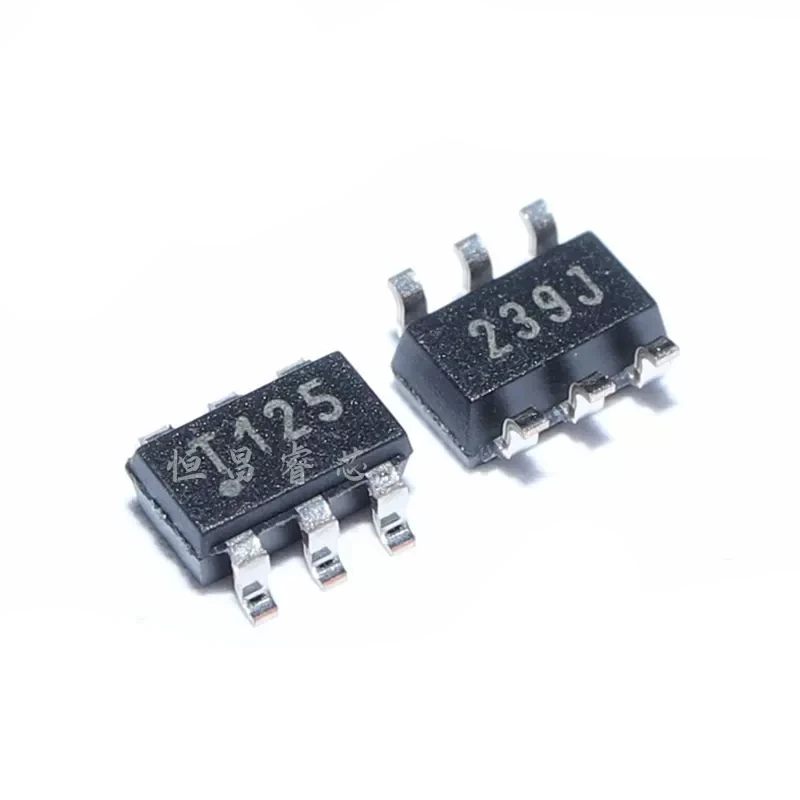
Understanding Febrile Seizures in Children
Febrile seizures are a concerning but generally harmless phenomenon that can occur in young children with high fevers. These seizures typically affect children between 6 months and 5 years old.
What are the characteristics of febrile seizures?
- Usually involve loss of consciousness
- Shaking of limbs on both sides of the body
- Typically last for a few minutes
- Often occur when body temperature rises rapidly
While febrile seizures can be frightening for parents to witness, they generally do not cause long-term harm to the child. However, it’s important to know when to seek emergency medical care.
When to seek emergency care for febrile seizures:
- If the seizure lasts longer than 5 minutes
- If the child doesn’t return to normal within a short period after the seizure ends
- If the child shows signs of stiff neck, extreme lethargy, or persistent vomiting
Even if emergency care isn’t necessary, it’s important to follow up with your child’s doctor after a febrile seizure to determine the underlying cause of the fever and discuss any necessary precautions or treatments.
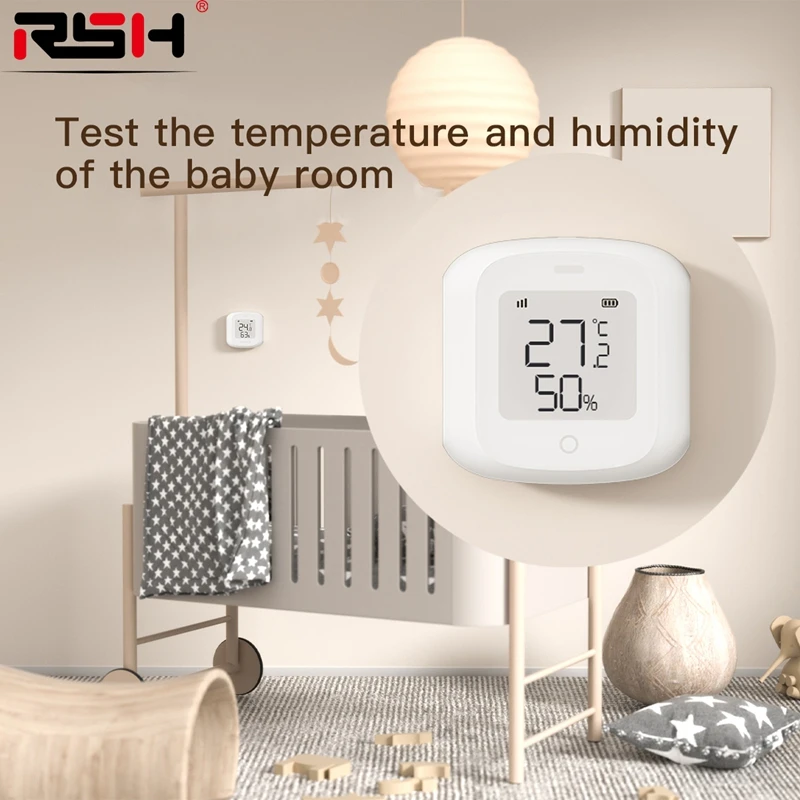
The Role of Body Temperature in Overall Health
Body temperature is more than just a number on a thermometer; it’s a vital sign that can provide valuable insights into our overall health status. Understanding the nuances of body temperature can help us make informed decisions about our health and when to seek medical attention.
How does body temperature impact our health?
- Helps regulate metabolic processes
- Plays a role in immune system function
- Affects sleep patterns and quality
- Influences cognitive performance
- Can indicate underlying health issues
While a fever is often a sign that our body is fighting off an infection, persistent changes in body temperature can sometimes indicate more serious health conditions. Regular monitoring of body temperature, especially when feeling unwell, can provide valuable information to healthcare providers.
It’s also worth noting that what’s considered a “normal” temperature can vary slightly from person to person. Some individuals naturally run a bit cooler or warmer than the average. Getting to know your own typical temperature range can help you better interpret any deviations.

Factors that can affect your baseline body temperature:
- Age (older adults tend to have lower baseline temperatures)
- Gender (women’s temperatures can fluctuate with menstrual cycles)
- Time of day (temperatures are typically lower in the morning and higher in the evening)
- Recent physical activity
- Certain medical conditions or medications
By understanding these factors and monitoring your temperature regularly, you can gain valuable insights into your health and potentially catch any issues early on.
Advances in Temperature Monitoring Technology
As our understanding of body temperature’s importance grows, so does the technology we use to measure it. While traditional mercury thermometers have largely fallen out of use due to safety concerns, a variety of new options have emerged.
Modern temperature monitoring devices:
- Digital oral thermometers
- Infrared ear thermometers
- Temporal artery thermometers
- Non-contact forehead thermometers
- Wearable temperature sensors
These new technologies offer benefits such as faster readings, increased comfort, and in some cases, continuous monitoring. However, it’s important to note that not all devices are equally accurate or suitable for all age groups.

Wearable temperature sensors, in particular, are an exciting development in the field of health monitoring. These devices can provide continuous temperature data, potentially alerting users to fever onset earlier than traditional methods.
Potential benefits of continuous temperature monitoring:
- Early detection of fever
- Tracking of temperature patterns over time
- Improved management of chronic conditions
- Enhanced data for healthcare providers
- Potential for integration with other health metrics
While these advanced technologies show promise, it’s important to remember that they should complement, not replace, professional medical advice. Always consult with a healthcare provider for proper diagnosis and treatment of any health concerns.
The Future of Body Temperature Research
As our understanding of body temperature continues to evolve, researchers are exploring new areas that could revolutionize how we interpret and use this vital sign. From personalized medicine to early disease detection, the future of body temperature research holds exciting possibilities.
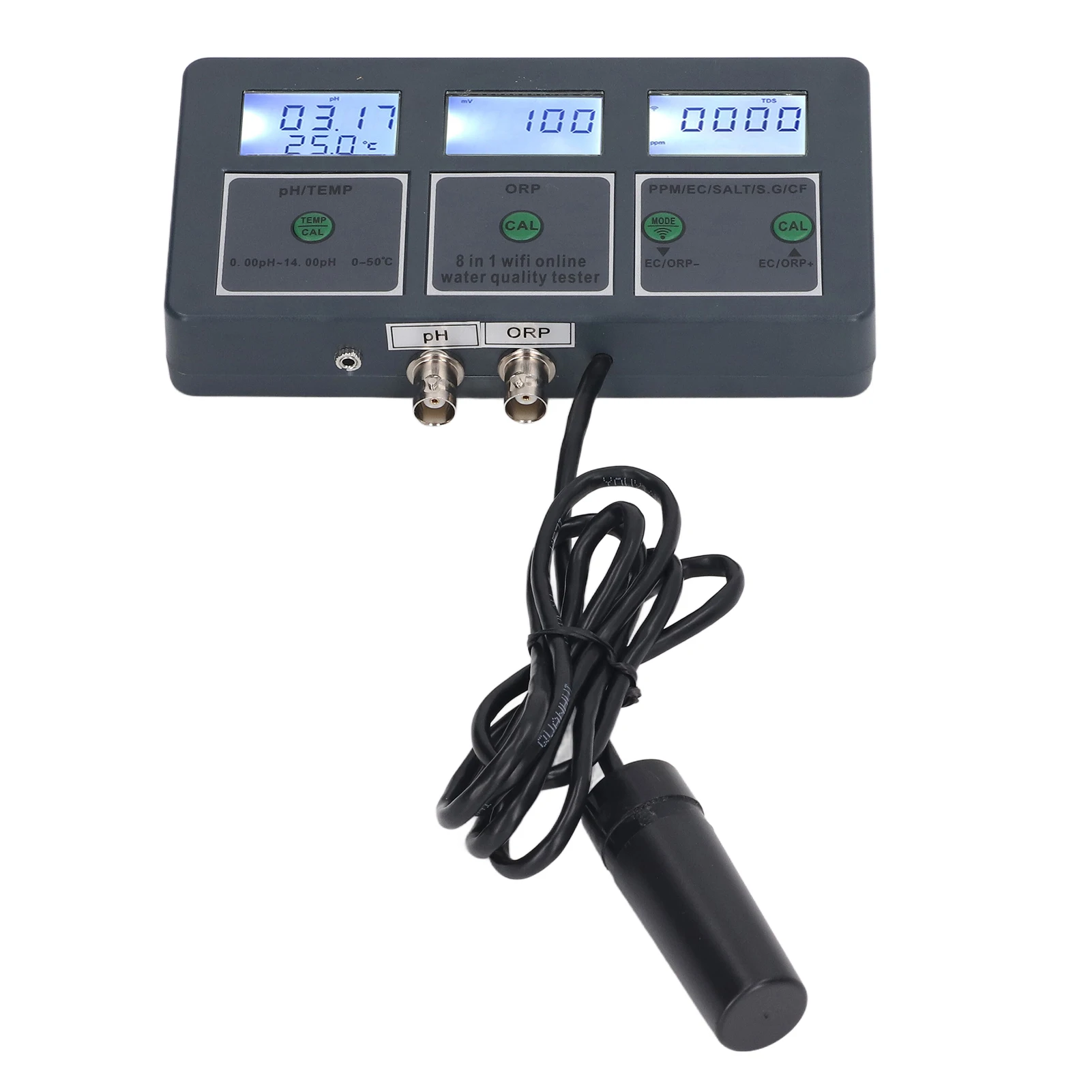
Emerging areas of body temperature research:
- Chronobiology and temperature rhythms
- Temperature as a biomarker for various diseases
- The role of brown fat in temperature regulation
- Impact of climate change on human body temperature
- Temperature patterns in mental health conditions
One particularly intriguing area of research is the potential use of body temperature patterns as an early warning system for various health conditions. By analyzing subtle changes in an individual’s temperature over time, it may be possible to detect the onset of infections or other health issues before other symptoms appear.
Another fascinating avenue of research is the exploration of how body temperature interacts with other physiological processes. For example, studies have shown that our body temperature naturally fluctuates throughout the day in sync with our circadian rhythms. Understanding these patterns could lead to improvements in areas such as sleep medicine and productivity optimization.

Potential future applications of temperature monitoring:
- Personalized fever thresholds based on individual baseline temperatures
- Integration of temperature data with other health metrics for comprehensive health monitoring
- Use of AI and machine learning to predict health events based on temperature patterns
- Development of non-invasive continuous core temperature monitoring devices
- Temperature-based chronotherapy for more effective medication timing
As research in these areas progresses, we may see a shift in how we view and use body temperature measurements. Rather than a simple indicator of fever, body temperature could become a powerful tool for personalized health management and early disease prevention.
In conclusion, while the concept of body temperature may seem simple on the surface, it’s a complex and fascinating aspect of human physiology. From understanding what constitutes a fever to exploring the latest in temperature monitoring technology, there’s always more to learn about this vital sign. By staying informed about body temperature and its implications, we can take a more active role in managing our health and well-being.
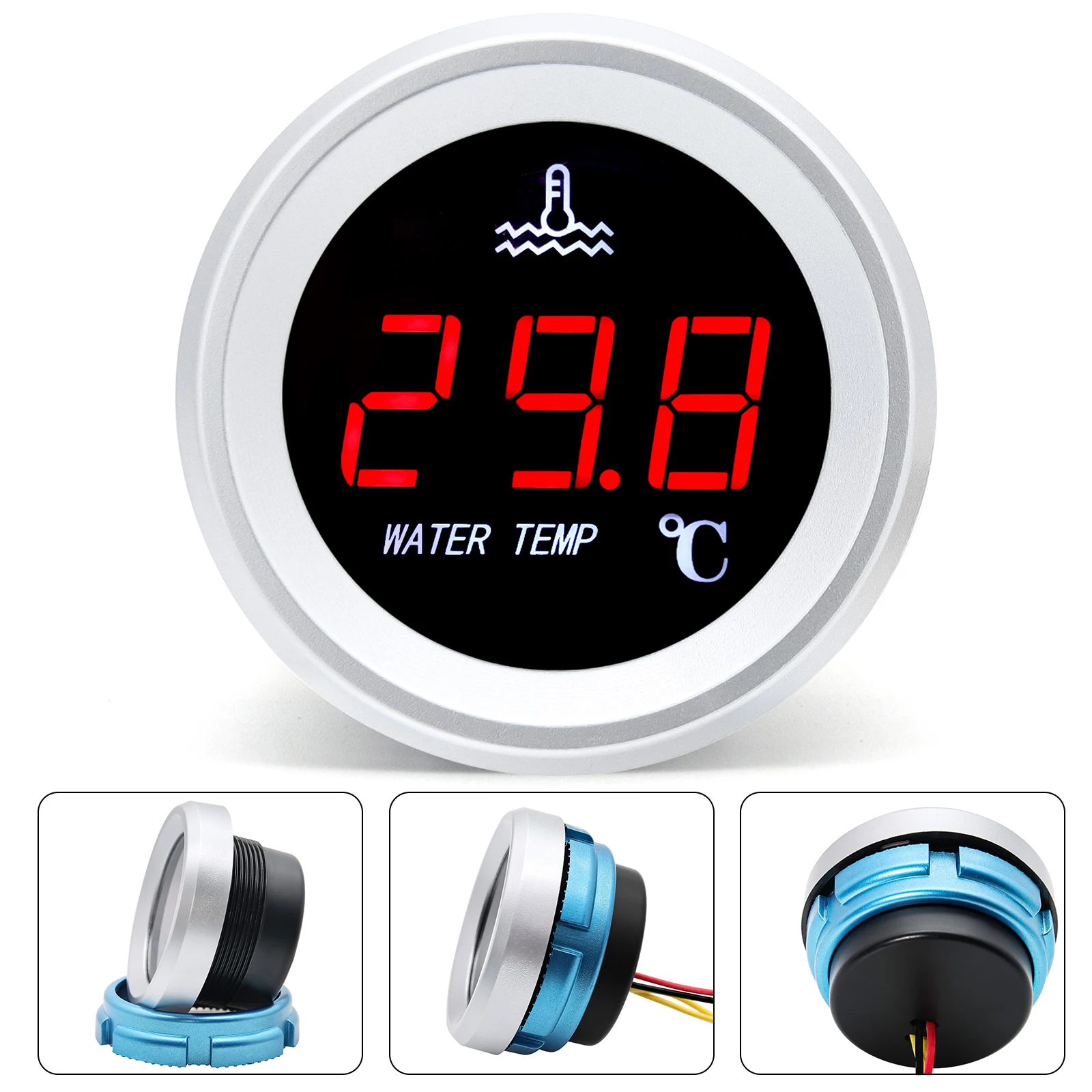
11 Fascinating Facts About Body Temperature
A fever is a temporary increase in your body temperature, and it’s often caused by illness, according to the Mayo Clinic. A rectal, ear, or temporal artery (forehead) temperature of 100.4 degrees or higher generally indicates a fever. Fevers usually subside within a few days. If you have a fever, you may also experience the following symptoms:
- Chills and shivering
- Sweating
- Headache
- Muscle aches
- Loss of appetite
- Irritability
- Dehydration
- General weakness
For adults, a body temperature of 103 degrees F or higher can be a cause for concern, and warrants a call to your doctor, according to the Mayo Clinic. Also call your doctor if along with a fever, you have a severe headache; an unusual skin rash; unusual sensitivity to bright light; stiff neck and pain when you bend your head forward; mental confusion; persistent vomiting; difficulty breathing or chest pain; abdominal pain or pain when urinating; or convulsions or seizures.
For infants and toddlers, a temperature that is only slightly higher than usual could be a sign of a serious infection, according to the Mayo Clinic. Call your doctor if your child is younger than 3 months and has a rectal temperature of 100.4 degrees F or higher; between 3 and 6 months old and has a rectal temperature up to 102 degrees F and seems atypically irritable, lethargic, or uncomfortable, or has a temperature higher than 102 degrees F; or between 6 and 24 months and has a rectal temperature higher than 102 degrees F that lasts longer than one day.
If your child is 2 years old or older, call your doctor if they have a fever that lasts longer than three days, or if they seem unresponsive to you.
Young children from 6 months to 5 years old might have febrile seizures with a high body temperature, which usually involve loss of consciousness and shaking of limbs on both sides of the body, according to the Mayo Clinic. Call for emergency medical care if a seizure lasts longer than five minutes, or take your child to the doctor as soon as possible after the seizure to figure out what caused it.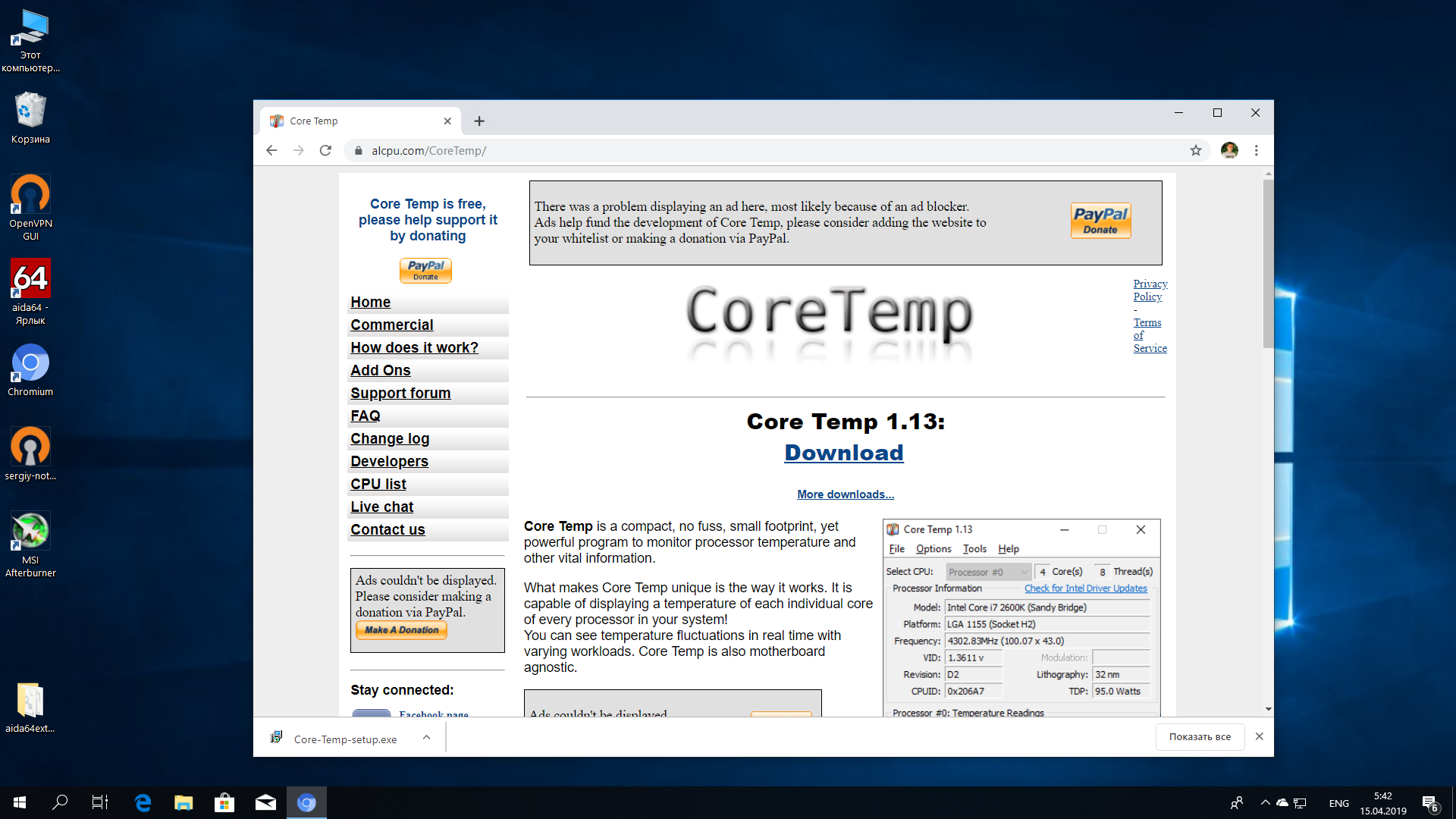
RELATED: 10 Essential Facts About Adult Fevers
Fever and temperature taking | Caring for kids
When your child is sick with an infection (bacterial or viral), it is common to also have a fever. Fever will not hurt your child. Usually, it goes away after 72 hours (3 days).
Babies younger than 6 months old should see a doctor when they have a fever. Older children can be treated at home, as long as they get enough liquids and seem well otherwise. However, they should see a doctor if their fever lasts for more than 72 hours.
There are several ways to take your child’s temperature:
- rectal method (by the rectum or ‘bum’)
- oral method (by the mouth)
- axillary method (under the armpit)
- temporal artery method (forehead)
- tympanic method (in the ear)
Which method should I use?
The right method depends on your child’s age. It’s important that the measurement is accurate. Use this chart to help you decide which method to use:
Use this chart to help you decide which method to use:
| Age | Recommended method |
|---|---|
| Birth to 2 years | 1st choice: Rectum (for an accurate reading) 2nd choice: Armpit |
| Between 2 and 5 years | 1st choice: Rectum (for an accurate reading) 2nd choice: Ear, armpit |
| Older than 5 years | 1st choice: Mouth (for an accurate reading) 2nd choice: Ear, armpit |
Temperature-taking tips
- Do not use a mercury thermometer. If it breaks, you might be exposed to the toxic substance.
- Do not use an oral thermometer to take a rectal temperature, or a rectal thermometer for oral temperature taking.
- A digital thermometer can be used for both rectal and oral temperature taking. It’s made of unbreakable plastic, is easy to read and measures temperature quickly.

- Products for taking temporal artery temperature (sweeping thermometer across your child’s forehead) at home are not accurate or reliable enough.
- Fever strips are not recommended because they do not give accurate readings.
To get an accurate reading of your child’s temperature, you’ll need to make sure it’s done right. Here’s how:
Rectum
This is the most reliable way to ensure a fever is not missed.
- Clean the thermometer with cool, soapy water and rinse.
- Cover the silver tip with petroleum jelly (such as Vaseline).
- Place your baby on their back with their knees bent.
- Gently insert the thermometer in the rectum, about 2.5 cm (1 inch), holding it in place with your fingers.
- After about 1 minute, you will hear the beep.
- Remove the thermometer and read the temperature.
- Clean the thermometer.
Mouth
The oral method is not recommended for children younger than 5 years old because it is hard for them to hold the thermometer under their tongue for long enough.
- Clean the thermometer with cool, soapy water and rinse.
- Carefully place the tip of the thermometer under your child’s tongue.
- With your child’s mouth closed, leave the thermometer in place for about 1 minute, until you hear the beep.
- Remove the thermometer and read the temperature.
- Clean the thermometer.
Armpit
The armpit (axillary) method is usually used to check for fever in newborns and young children, but it’s not as accurate as a rectal temperature. If an axillary temperature does not show a fever but your child feels warm and seems unwell, take a rectal measurement.
- Use a rectal or oral thermometer.
- Clean the thermometer with cool, soapy water and rinse.
- Place the tip of the thermometer in the centre of your child’s armpit.
- Make sure your child’s arm is tucked snugly against their body.
- Leave the thermometer in place for about 1 minute, until you hear the “beep.
 ”
” - Remove the thermometer and read the temperature.
- Clean the thermometer.
Ear
Though quick to use, the ear (tympanic) method can give temperature readings that are too low, even when the manufacturer’s directions are followed. It is not as reliable or accurate as rectal temperature taking.
- Use a clean probe tip each time, and follow the manufacturer’s instructions carefully.
- Gently tug on the ear, pulling it back. This will help straighten the ear canal, and make a clear path inside the ear to the eardrum.
- Gently insert the thermometer until the ear canal is fully sealed off.
- Squeeze and hold down the button for one second.
- Remove the thermometer and read the temperature.
What is a normal temperature?
The following chart will tell you if your child has a fever. The normal temperature range varies and depends on the way you took your child’s temperature.
| Method | Normal temperature range |
|---|---|
| Rectum | 36. 6°C to 38°C (97.9°F to 100.4°F) 6°C to 38°C (97.9°F to 100.4°F) |
| Mouth | 35.5°C to 37.5°C (95.9°F to 99.5°F) |
| Armpit | 36.5°C to 37.5°C (97.8°F to 99.5°F) |
| Ear | 35.8°C to 38°C (96.4°F to 100.4°F) |
The degree (height) of a fever does not tell you how serious your child’s illness is—how your child is acting is usually a better sign. A child with a mild infection can have a high fever, while a child with a severe infection might have no fever at all.
What can I do if my child has a fever?
Keep your child comfortable, and offer plenty of fluids.
If your baby has a fever, remove extra blankets and clothing so heat can leave their body and help lower the body temperature. But don’t take off all your child’s clothes, because they may become too cold and start shivering, which makes more body heat and will cause their temperature to rise again.
Sponging your child with lukewarm water, alcohol baths and rubs is not recommended.
Medication is not always needed to reduce a child’s temperature. In fact, the best reason for giving your child medicine is not to reduce the fever, but to relieve any aches and pains.
Acetaminophen (such as Tylenol, Tempra, Panadol and others) is a suitable medication for a fever. Unless your doctor says otherwise, you can give the dose recommended on the package every 4 hours until your child’s temperature comes down. The temperature usually comes down in 1 hour and then rises again. If this happens, the medication may have to be repeated at the recommended time. Do not give more than 5 doses in 24 hours.
Alternatively, you can give your child ibuprofen, which is found in products such as Advil and Motrin. Be sure to follow the directions on the package. Ibuprofen can be given every 6 to 8 hours — up to 4 times in a 24-hour period. Do not exceed the recommended dose.
- Ibuprofen should only be given if your child is drinking reasonably well.

- Do not give ibuprofen to babies under 6 months without first talking to your doctor.
Do not alternate between using acetaminophen and ibuprofen as this can lead to dosing errors.
A child or teenager with a fever should not be given aspirin [acetylsalicylic acid (ASA)]. If the fever is due to chickenpox, influenza or certain other viral infections, taking aspirin can increase the risk of Reye’s syndrome. This is a very serious condition that can damage the liver and brain.
Contact your health care provider if your child:
- Has a fever and is less than 6 months old.
- Has a fever for more than 72 hours.
- Is excessively cranky, fussy or irritable.
- Is excessively sleepy, lethargic or does not respond.
- Is persistently wheezing or coughing.
- Has a fever combined with a rash or any other signs of illness that worry you.
Reviewed by the following CPS committees
- Community Paediatrics Committee
Last updated: October 2020
Fever Temperatures: Accuracy and Comparison
Topic Overview
You can take a temperature using the mouth (oral), anus (rectal), armpit (axillary), or ear (tympanic). But the temperature readings vary depending on which one you use, and you need an accurate body temperature to determine if a fever is present.
But the temperature readings vary depending on which one you use, and you need an accurate body temperature to determine if a fever is present.
Medical research hasn’t determined an exact correlation between oral, rectal, ear, armpit, and forehead temperature measurements. Generally, the correlation of temperature results are as follows:
- The average normal oral temperature is 98.6°F (37°C).
- A rectal temperature is 0.5°F (0.3°C) to 1°F (0.6°C) higher than an oral temperature.
- An ear (tympanic) temperature is 0.5°F (0.3°C) to 1°F (0.6°C) higher than an oral temperature.
- An armpit (axillary) temperature is usually 0.5°F (0.3°C) to 1°F (0.6°C) lower than an oral temperature.
- A forehead (temporal) scanner is usually 0.5°F (0.3°C) to 1°F (0.6°C) lower than an oral temperature.
It is important to remember:
- Rectal temperatures are generally thought to be the most accurate for checking a young child’s temperature.
- The manufacturer of the temperature device you use, such as an ear or forehead thermometer, provides information on how to use it.
 Be sure to read and follow the instructions to obtain an accurate temperature. The information may also include how the results of the device correlate with the results from other methods of taking a temperature.
Be sure to read and follow the instructions to obtain an accurate temperature. The information may also include how the results of the device correlate with the results from other methods of taking a temperature. - Plastic strip thermometers have some uses, but they aren’t recommended for general home use. Unlike oral, rectal, and ear thermometers, plastic strip thermometers measure skin temperature, not body temperature.
When you talk with your doctor about your temperature, be sure to say what method was used to take the temperature.
Temperature comparison table
The temperature comparison table below will give you the range of temperature correlation with the different methods used to take a temperature. For information about taking accurate temperatures in infants and children, see the topic Body Temperature.
To use the table:
- Find the method that you used to take a temperature.
- Find the correct temperature range.
- Look for the temperature range of the other methods that correlates to the method you used.
 For example:
For example:- If your 2-year-old child’s oral temperature is 101°F (38.3°C), his or her rectal or ear temperature may be about 102°F (38.9°C). Remember, a child has a fever when his or her temperature is 100.4°F (38°C) or higher, measured rectally.
- If your axillary temperature is 100°F (37.8°C), your oral temperature is about 101°F (38.3°C).
Axillary/Forehead (°F) | Oral (°F) | Rectal/Ear (°F) |
|---|---|---|
98.4–99.3 | 99.5–99.9 | 100.4–101 |
99.4–101.1 | 100–101.5 | 101.1–102.4 |
101.2–102 | 101.6–102.4 | 102.5–103.5 |
102.1–103.1 | 102.5–103.5 | 103. |
103.2–104 | 103.6–104.6 | 104.7–105.6 |
Axillary/Forehead (°C) | Oral (°C) | Rectal/Ear (°C) |
|---|---|---|
36.9–37.4 | 37.5–37.7 | 38–38.3 |
37.5–38.4 | 37.8–38.5 | 38.4–39.1 |
38.5–38.9 | 38.6–39.1 | 39.2–39.7 |
39–39.5 | 39.2–39.7 | 39.8–40.3 |
39.6–40 | 39.8–40.3 | 40.4–40.9 |
Credits
Current as of:
February 26, 2020
Author: Healthwise Staff
Medical Review:
William H.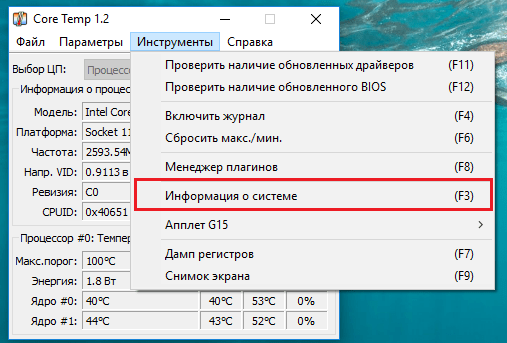 Blahd Jr. MD, FACEP – Emergency Medicine
Blahd Jr. MD, FACEP – Emergency Medicine
Adam Husney MD – Family Medicine
Kathleen Romito MD – Family Medicine
H. Michael O’Connor MD – Emergency Medicine
David Messenger MD
Current as of: February 26, 2020
Author:
Healthwise Staff
Medical Review:William H. Blahd Jr. MD, FACEP – Emergency Medicine & Adam Husney MD – Family Medicine & Kathleen Romito MD – Family Medicine & H. Michael O’Connor MD – Emergency Medicine & David Messenger MD
The Average Body Temperature ISN’T 98.6 Degrees
We’ve been told all our lives that our average human body temperature is 98.6 degrees. It’s one of those numbers that’s just ingrained into our consciousness. Especially right now, when we’re being hyper-vigilant about fevers, knowing what’s normal is important for knowing what’s high.
For many of us, 98.6 never seemed quite right. I’ll use myself as an example. As long as I’ve been taking my temperature, it’s hung around the range of 96. 8 to maybe 97.2. Turns out I’m not a weirdo (in that way, at least) and that the actual average human body temperature is no longer 98.6 degrees.
8 to maybe 97.2. Turns out I’m not a weirdo (in that way, at least) and that the actual average human body temperature is no longer 98.6 degrees.
According to the Seattle Times, the average human body temperature might be closer to 97.8, or even lower depending on when you were born. When you think about that it makes sense, and it’s also important to remember this number is still an average, not the temperature that all of us will have at all times.
Of course, it’s logical that we won’t all have the same body temperature and that it can vary with health, age, sex, and other factors. Many women who have tracked their body temperature to try to get pregnant will tell you that it can fluctuate depending on where you are in your cycle, for instance.
That makes sense, but what more baffling to scientists is the fact that the average body temperature has dropped consistently over time, from that 98.6 high to 97.8 or lower depending on birth year. Some of that decline might have to do with where that 98.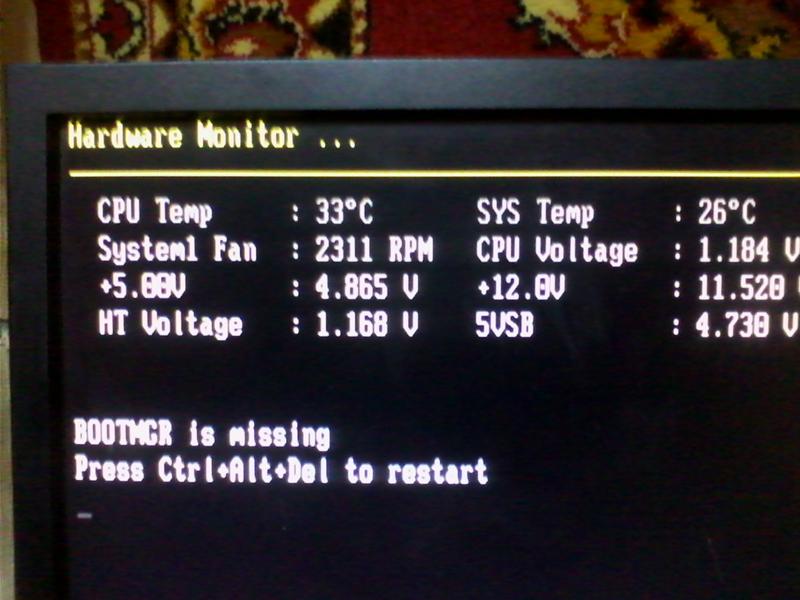 6 number came from in the first place.
6 number came from in the first place.
We have that number thanks to a German physician by the name of Carl Reinhold August Wunderlich. He conducted a study in 1851 that set the number at 98.6. Other studies exist from the time as well, such as one that modern researchers used to compare with modern body temperatures, which was done on Civil War vets.
There are lots of reasons people in the 19th century would have higher body temperatures than we do now. They didn’t have the kind of sanitation, healthcare or standards of living we have, which means their bodies might have been warmer from fighting low-grade infections, especially in their teeth. And nowadays we’re much more sedentary, but we’re also taller so …
What’s really baffling to scientists though is not that that the average body temperature has gone down since the 1850s, it’s that it has decreased since the 1970s. That’s much harder to explain. Whether it’s climate change or more measurement lowering the average, higher obesity-rates or medications, doctors aren’t sure.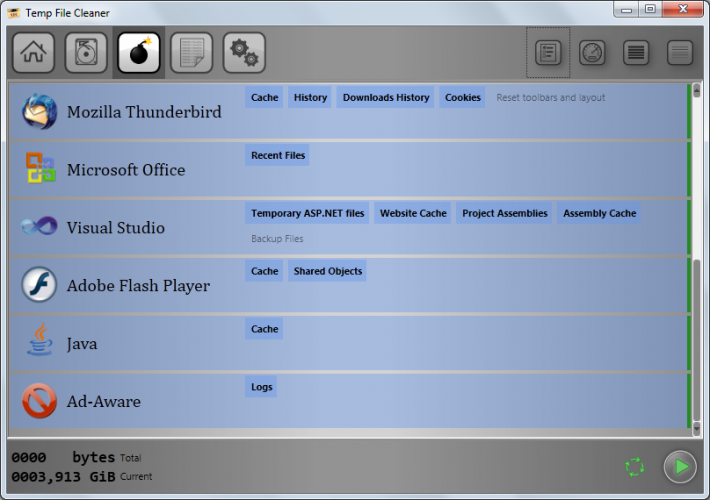
But what we can be sure on is that 98.6 is no longer the number we should assume will be on the thermometer. It also makes a difference for what number is high for you. There is however a difference between feeling uncomfortable because your body temperature is higher than normal and having what it medically considered a fever. A person is not considered to have a significant fever until their temperature is over 100.4.
Still, it’s a good idea to take your temperature when you’re feeling healthy so you know if there has been a variation if you take it when you’re feeling sick. Because 98.6 might have been normal in 1851, but it might not be normal for you.
(via Seattle Times)
Want more stories like this? Become a subscriber and support the site!
—The Mary Sue has a strict comment policy that forbids, but is not limited to, personal insults toward anyone, hate speech, and trolling.—
Have a tip we should know? [email protected]
A new ‘normal’ body temperature
November 9, 2020
Have you taken your temperature recently? Was it lower than the standard 98.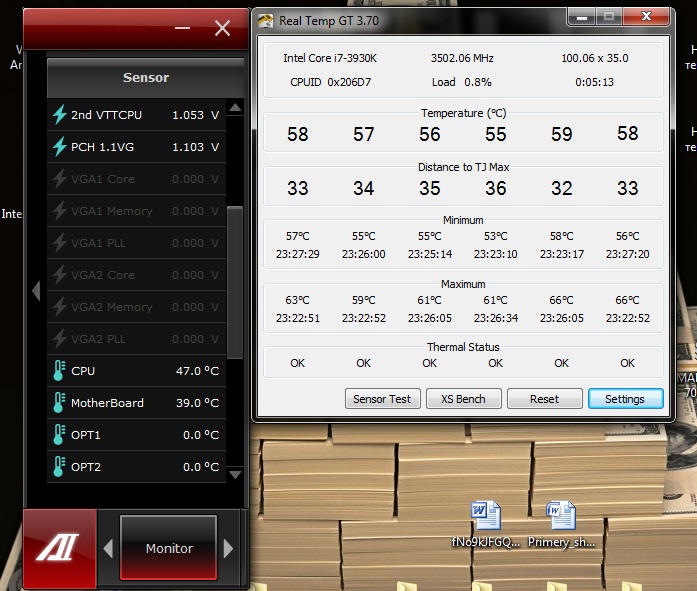 6 degrees Fahrenheit?
6 degrees Fahrenheit?
Research published earlier this year indicates “normal” body temperature has been steadily decreasing in the United States over the last 200 years, now hovering around 97.8 degrees. Similar trends were reported in studies from the United Kingdom.
Thermometer photograph courtesy of Unsplash.
Download Full Image
New research not only found the same decrease in remote populations of people living in the Bolivian Amazon, but the decrease in body temperature took place over a mere 20 years.
The study was published by a transdisciplinary team, including Arizona State University anthropologist Benjamin Trumble. Their findings show rapidly decreasing body temperatures among the Tsimane people, living in remote communities in the rainforests of Bolivia.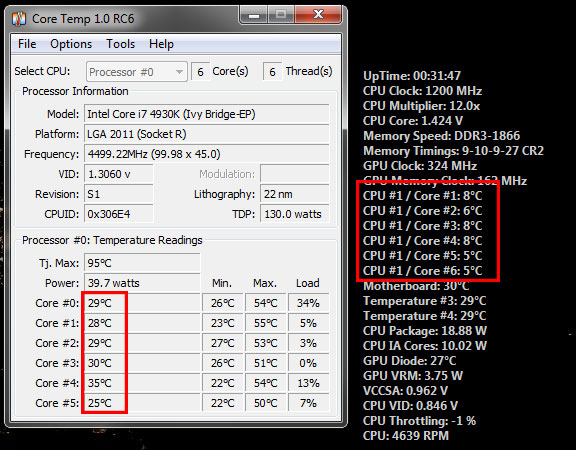
“The finding of lower-than-expected body temperatures in the U.S. had a lot of people scratching their heads,” said study author Michael Gurven of the University of California, Santa Barbara. “Was this a fluke? Here, we confirm that body temperatures are below 98.6 degrees Fahrenheit outside of places like the U.S. and U.K. The area of Bolivia where the Tsimane live is rural and tropical with minimal public health infrastructure.”
Researchers are unsure why the change in the Tsimane population body temperature is so rapid, but the Tsimane have undergone other rapid changes as well. Increased exposure to larger nearby market towns has impacted many facets of everyday life for the Tsimane. For example, some Tsimane communities close to the town San Borja now have access to electricity.
General societal advancements may point to why we’re seeing this trend. For example, in the U.S., body temperature started decreasing after the industrial revolution. Access to running water in people’s homes and increased availability of medical care could lessen the prevalence of infection and disease and cause body temperatures to decrease.
Among the Tsimane, decreased body temperature could be a result of increased interactions with larger towns — leading to more antibiotic use, and better access to warm clothing and insulated housing. Changes in parasitic infection rates may also affect body temperature. Trumble notes there is no “silver bullet,” or one factor to which the decrease can be attributed.
Other factors that may impact body temperature in the Tsimane are changes in body fat percentage, physical activity and sleep patterns.
These temperature studies could have major implications for global health. Our body temperature is easy to measure and can be used as an indicator of overall health. Both in the U.S. and in Tsimane communities, the decreased body temperature has coincided with increased life expectancy.
Figures showing predicted body temperatures by study date. From Gurven et al., Science Advances 28 Oct 2020: Vol. 6, no. 44, eabc6599 DOI: 10.1126/sciadv.abc6599. This work is licensed under CC BY-NC (http://creativecommons. org/licenses/by-nc/4.0/).
org/licenses/by-nc/4.0/).
Expanding medical data
Trumble notes the majority of our medical data comes from studies conducted in the U.S. or Europe. This information forms our foundation of what is considered “normal,” but for most of human history, we lived in a nonindustrial environment.
“If you compress the last 5 million years of human evolution into a single year, we were hunter-gatherers on Jan. 1, March 1 and so on, all the way until Dec. 31 at 11:40 p.m.,” Trumble said. “That’s when the industrial revolution happened.”
Human evolution provides important context in studying human physiology and changes in health over time and in our current populations. By better understanding health in nonindustrialized populations, researchers can achieve a broader view of how humans interact with and adapt to their surroundings, and better understand variation in global health.
“Right now, we’re operating way outside of the manufacturer’s recommended usage,” Trumble said. “Meaning, our bodies didn’t evolve to sit in chairs in front of computers.”
“Meaning, our bodies didn’t evolve to sit in chairs in front of computers.”
Tsimane Health and Life History Project
The Tsimane live in about 95 communities in remote, forested locations in Bolivia, largely living off hunting and foraging. Few communities have access to electricity but none have access to running water.
The Tsimane Health and Life History Project was founded 16 years ago. The team has received funding from the National Institutes of Health to study healthy aging, specifically cardiovascular health and Alzheimer’s disease. This team is composed of a mobile medical team of Bolivian doctors, a Bolivian biochemist and Tsimane community members trained as anthropologists. This group of experts provides free health care to the Tsimane, and, with approval from community members, conducts specific health-related studies. Research is largely led by co-directors Hillard Kaplan, Gurven, Trumble and Jon Stieglitz.
The research, “Rapidly declining body temperature in a tropical human population” is published in Science Advances.
California woman shares experience battling coronavirus through journaling
FRESNO, Calif. — Tammy Howe says she did everything right, yet still fell victim and became infected with the coronavirus.
“Where I got this, I have no idea,” Howe said. “I’m very cautious. I have hand sanitizer in my car. I have 99 percent alcohol at home. I wash my hands.”
Howe resides in Irvine, California. She says about three weeks ago is when she noticed the symptoms, starting with a slight cough.
WATCH: California man shares how he fully recovered from COVID-19
6033634
Howe started to feel worse. She started journaling her symptoms for her doctors, which included burning sinus pain, losing the ability to smell or taste and fever.
Ultimately, she went to the hospital to get tested for COVID-19.
“I said I don’t want to die, I want to stay with my daughter and have her take care of me,” Howe said.
Her test came back positive, and she soon posted a video online so others would take the virus seriously.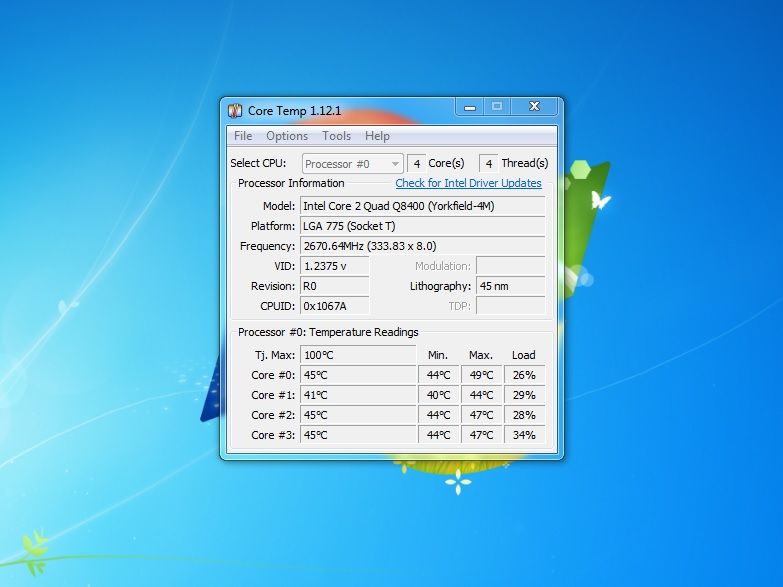
She is thankful to be alive but says all that really helped her heal was prayer and time.
“It just has to run its course and pray it doesn’t become deadly,” Howe said.
She wants others to hear the warning.
“Don’t go out,” Howe said. “You can wear a mask, but you’re still bringing the germ home.”
Howe is recovering at home and may have to remain isolated at home for up to six weeks.
Below, you can find Howe’s journal as she battled COVID-19.
Wed 3/18 (Day 1)
Started a constant little cough, felt like I had swallowed water wrong and needed to keep coughing to get it out of my lungs, mild headache, went to bed.
Thurs. 3/19 (Day 2)
Woke up with sinus headache and burning sinus pain in left nostril, sore throat from dry cough that lasted throughout the night before. Still little dry cough here and there but have energy and feel normal. Thought it was allergies.
Fri. 3/20 (Day 3)
Same symptoms as yesterday. Around 10 p.m. noticed the soreness in my throat moved into my chest. Not painful, just mentholatum feeling. If I take a deep breath in, that makes me cough.
Around 10 p.m. noticed the soreness in my throat moved into my chest. Not painful, just mentholatum feeling. If I take a deep breath in, that makes me cough.
Sat. 3/21 (Day 4, request call from Dr.)
Woke up with sore throat and same sinus pain on left side. Still had energy and felt like allergies, but no appetite. Noticed no sense of smell or taste and that when I ate dinner last night, I thought it was very bland, but realized I had lost my taste until 3 p.m. Skin started to burn and body felt a little achy. No energy. Showered, napped and woke up feeling the same but more achy and stiff. Chills, Skin burning, sinus pain and same chest feeling.
Sun. 3/22 (Day 5)
Uncomfortable sleeping last night as body and muscles are so tender. Body is so tender, like getting a really hard body massage and if someone touches you the next day, it hurts. Sinus pain not as bad, chest the same. But otherwise I’m fine, no fever and I’m not miserable like those who have COVID say it’s the worse they’ve ever felt. Just uncomfortable. Took two Tylenol hoping it takes the edge off. Slept off and on all day, body still sore and weak, no energy.
Just uncomfortable. Took two Tylenol hoping it takes the edge off. Slept off and on all day, body still sore and weak, no energy.
Monday 3/23 (Day 6, request call from Dr.)
Slept a little better, same symptoms this morning, skin not as sensitive, sinuses still burning in left side, no congestion, just occasional nasal drip, still no taste or smell. Overall just achy and sinus headache/burning. Not sure about appetite as I’m not usually hungry. First thing in the morning.
Dr. Shapiro called, will not allow testing yet as I’m not at risk. Prescribed prednisone for three days for possible sinus infection (I know it’s not a sinus infection, but will do what the Dr suggests). (Day 1 of steroid) Suggests call back 5-7 days and if symptoms are still here, then may be able to get test. Stay home for 14 days from day I got symptoms.
Thur. April 2 (Day 6)
Had more energy today, a lot of on and off sweating. More dry cough today than last couple days. A little appetite this evening, but no taste or smell still. Drinking super greens/vitc smoothies the last three days to help build immunity.
A little appetite this evening, but no taste or smell still. Drinking super greens/vitc smoothies the last three days to help build immunity.
Tues. 3/24 (Day 7)
Didn’t sleep well, sweats and toss and turn all night. Sinus burning is a little less today. Still no appetite or smell or taste, metal taste on tongue is very strong today. Way more energy. Day two of steroid.
Wed. 3/25 (Day 8)
Didn’t sleep well again. Feel the same as yesterday. Sinus burning still the same. Napped and off and on sweating like hot flashes. Day three of steroid. Got a thermometer and took temp at night 98.5.
Thurs. 3/26 (Day 9)
Slept better, 8 a.m. temp 96.6, symptoms still the same, getting blood work at 11 a.m. for covid testing with two-day results, sounds sketch but will try it (lab tech cane to my house) 10 a.m. temp 99.1, took a shower at 9 a.m. and no energy and tickle in chest and coughing ever since. Temp at 10:30 a.m. 99.4, temp at 11 a. m. 99.6, slept, 3 p.m. temp 99.6, body aches, skin burning, headache, lethargic, a bit delirious and very dark and weird dreams, took two Tylenol, took Tylenol at 1:15 a.m., major body aches, chills 100 temp.
m. 99.6, slept, 3 p.m. temp 99.6, body aches, skin burning, headache, lethargic, a bit delirious and very dark and weird dreams, took two Tylenol, took Tylenol at 1:15 a.m., major body aches, chills 100 temp.
Fri. 3/27 (Day 10)
Horrible night sleeping with fever, body aches, headache. Woke to temp at 97, took Tylenol at 9 a.m., still achy, headache, lethargic, delirious, no taste or smell or appetite, slept, temp at 11:20 a.m. 98, called Dr., (see below the process to get to Urgent care) went to urgent care, flu test negative, tested for covid-19 (5-7 day results) prescribed doxycycline and inhaler in case it’s an infection and test is negative. Temp 98.2, came home back in bed, no energy, ate some dinner, need to keep fueled for energy! Took Tylenol, temp back up to 99.6, feeling nauseous, stomach very acidic and making a lot of noise, body aching and bad headache, woke up at 2 a.m., dry heaves and diarrhea, temp 98.8.
Sat. 3/28 (Day 11)
Didn’t sleep well, back pain, weak, same symptoms. Temp 99.6, 9:30 am. .took Tylenol, used inhaler.
Temp 99.6, 9:30 am. .took Tylenol, used inhaler.
3:30 more Tylenol, temp holding at 98, diarrhea, ice packs and cbd cream on back helping with back pain and overall comfort. Ate some lunch, more diarrhea, drank a iced blended pedialyte, temp 98.1 at 7 p.m., temp at 10:30 p.m. 97.6, temp at 11:15 p.m. 98.8 took two Tylenol, more sleeping.
Sun. 3/29 (Day 12)
Slept better, ice packs helped. Woke up very weak, headache and body aches. Still no senses. Temp 97.7, Tylenol at 9:30 a.m., ice packs on back help with spasms and back aching. Trying to stay hydrated. Chest feels more heavy today and coughing more. Using inhaler. Dr confirmed positive for COVID-19. Keeping hydrated, diarrhea, nausea and stomach cramping. Temp at 7:30 p.m. 99.6, taking Tylenol, 8:45 p.m. temp 100.2, 3:20 a.m. temp 97.9, took two Tylenol, sleeping a lot.
Mon. 3/30 (Day 13)
Woke up at 3 a.m., couldn’t sleep, coughing a lot, used inhaler, talked to a friend for 2 hours, grateful for the energy and for her! 5 a. m. Drank my tea, Feel like I’ve turned a corner, Showered and temp at 7 a.m. 97.8, feeling a little weak, 9:30 a.m. temp 97.2, took 2 Tylenol, rested, craving and dreaming about Mexican food but still no taste or smell. Nurse called and checked on me. Informed breathing was tight, Ate some breakfast, napped. 12:15 pm temp 99.0, coughing and chest feeling much heavier and tight. Frightening feeling as symptoms are not getting better. Used inhaler and drank a small cup of pedialyte slush, Took a long nap.
m. Drank my tea, Feel like I’ve turned a corner, Showered and temp at 7 a.m. 97.8, feeling a little weak, 9:30 a.m. temp 97.2, took 2 Tylenol, rested, craving and dreaming about Mexican food but still no taste or smell. Nurse called and checked on me. Informed breathing was tight, Ate some breakfast, napped. 12:15 pm temp 99.0, coughing and chest feeling much heavier and tight. Frightening feeling as symptoms are not getting better. Used inhaler and drank a small cup of pedialyte slush, Took a long nap.
Health department called, stay quarantined for 3 days after fever, 7 days at home after symptoms occurred. Only go to Hosptial if breathing is compromised. Temp at 4 pm 98.8, chest still very tight. Took 2 Tylenol at 4:20 pm, Trying not to talk as it makes me cough. Still very weak and tired. Ate some lunch. Trying to sit up in living room for a short time to get lungs upright, soooo weak. Napped, woke up sweating, 10 pm took 2 Tylenol and had a Pedialyte slush.
Tues. 3/31 (Day 14)
Temp 97.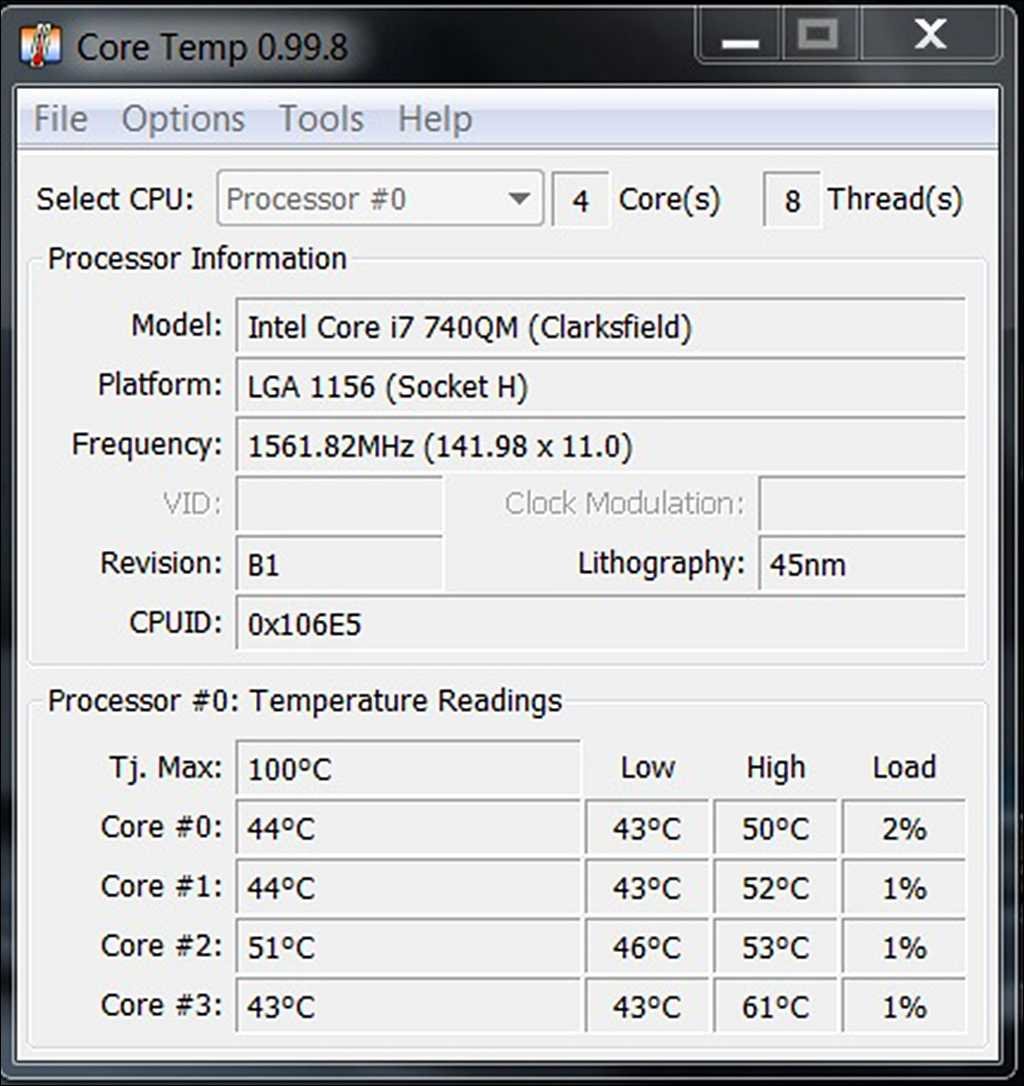 7 at 5 am, chest still inflamed like asthma feeling, but oxygen level and breathing is fine as long as I rest and don’t talk too much, dry cough, used inhaler, drank my morning green tea, helps relieve the chest inflammation/soothing. 6 am temp 97.7, took 2 Tylenol, slight headache, senses still gone, have a little better energy but still weak. 9:30am temp 97.7, still resting. 12:30pm temp 98.3. Napping and will see how temp is when I wake without Tylenol. 1:40pm after nap, temp 97.4 4:30pm temp 99.4 (no Tylenol since 6am), 5:15pm temp 99.1, took 2 Tylenol. Called urgent care left message to see if zpack can be prescribed. Broke fever, sweats, stomach cramps, Ate some dinner, 9:15 pm temp 96.4.
7 at 5 am, chest still inflamed like asthma feeling, but oxygen level and breathing is fine as long as I rest and don’t talk too much, dry cough, used inhaler, drank my morning green tea, helps relieve the chest inflammation/soothing. 6 am temp 97.7, took 2 Tylenol, slight headache, senses still gone, have a little better energy but still weak. 9:30am temp 97.7, still resting. 12:30pm temp 98.3. Napping and will see how temp is when I wake without Tylenol. 1:40pm after nap, temp 97.4 4:30pm temp 99.4 (no Tylenol since 6am), 5:15pm temp 99.1, took 2 Tylenol. Called urgent care left message to see if zpack can be prescribed. Broke fever, sweats, stomach cramps, Ate some dinner, 9:15 pm temp 96.4.
Wed 4/1 (Day 15, 2 weeks since symptoms started)
Woke up at 8 am, slept ok. Temp 97.2, coughing a lot. Same symptoms, used inhaler, drank my warm tea, showered, 11:30 am ate an orange, temp 99.0, slight headache and shaky and a bit weak, but pushing through, can’t stay in bed all day! Gotta move these lungs! sanitized house, doing wash, no Tylenol since 5 pm yesterday.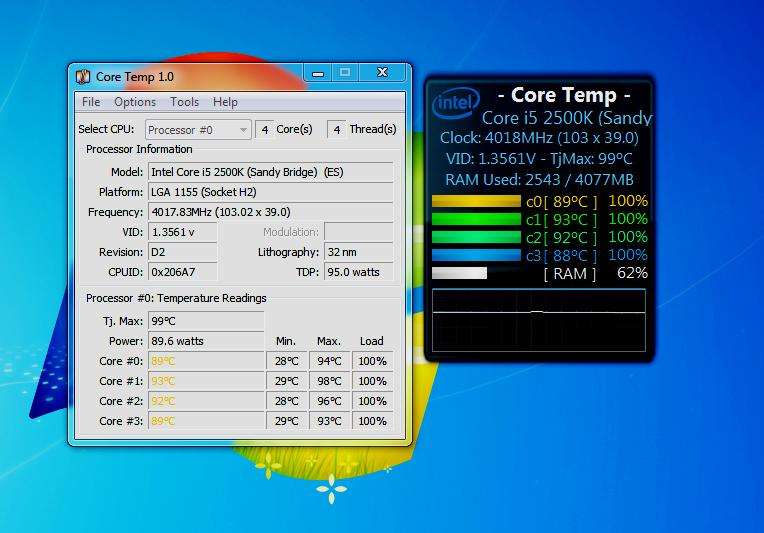 Wore out from cleaning a bit. Trying to get temp to regulate on its own. Tylenol is making my stomach cramp and diarrhea?? Only taking if fever goes up to 100.4 or higher. Temp at 1:30 99.0, ate some lunch, temp 2:00pm 100.2, dr called, recommends ER visit for xrays and to check symptoms and maybe prescribe meds.
Wore out from cleaning a bit. Trying to get temp to regulate on its own. Tylenol is making my stomach cramp and diarrhea?? Only taking if fever goes up to 100.4 or higher. Temp at 1:30 99.0, ate some lunch, temp 2:00pm 100.2, dr called, recommends ER visit for xrays and to check symptoms and maybe prescribe meds.
6 pm, just returned from ER, ran every test in the book! EKG, xrays, blood work, urine sample, vitals, blood pressure up maybe due to fever, oxygen levels a little low, temp 100, a bit dehydrated, IV brought me back to life for a bit. Gave me Tylenol to get fever back down. Dr calls my cell phone to go over results as they are avoiding one on one contact to help prevent the spread. That was weird. Have pneumonia in one lung, prescribed zpack. Found it odd that they give you the prescription and send you physically to the pharmacy to get it filled even tho I’m a carrier! And that the pharmacies might be low on the antibiotic as it’s very popular right now. But we called around and were able to get it filled./SRIC-4-640x500.jpg) Hannah went into the pharmacy to get it. I stayed in the car.
Hannah went into the pharmacy to get it. I stayed in the car.
Home back in bed, Ate some food to take with first dose of zpack. Drank more pedialyte, Dr recommends due to my stomach sensitivity to take one this evening, 1 in the am and 1 in the pm. Praying it doesn’t hurt my stomach too much! 8:30 pm temp rising back up 99.4 so took more Tylenol and going to sleep, praying meds and IV will help turn things around fast!
Thursday 4/2 (Day 16)
Rough night, toss and turned, muscles achy, dreaming vividly. Coughing a lot and very thirsty so up and pacing to get lungs working from 1am-4am. Slept til 8am. Temp 97.9, took zpack pill #2 with morning tea. Ate an orange and boiled egg white. Decided with lots of prayer to make a video post for social media to educate others on the virus through my experience. Not easy but glad I did it! Lots of positive feedback. So surprised so many aren’t taking this serious! But my message had been a huge eye opener! Thank you Jesus!! Use me how you will, I’m all yours!!!
Trying to stay hydrated, urinating a lot. No pain from zpack yet thank God12:00pm fever spiking to 99.4 again and headache, took 2 Tylenol, rested, ate 1/2 sandwich and small bag of chips and pedialyte slushy. Napped, woke up with same headache, temp at 5:30 98.6, took 3rd zpack pill. Drinking lots of water. Temp at 6:45, 99.0, trying to take Tylenol every 7-8 hours so to not take more then 6 in 24 hours per ER nurse. 8 pm, temp 99.4, ate an orange, taking 2 Tylenol, 8:30 pm feeling very hot and achy, temp 100.2, ice packs for aches and fever, so weak and sleeping a lot.
No pain from zpack yet thank God12:00pm fever spiking to 99.4 again and headache, took 2 Tylenol, rested, ate 1/2 sandwich and small bag of chips and pedialyte slushy. Napped, woke up with same headache, temp at 5:30 98.6, took 3rd zpack pill. Drinking lots of water. Temp at 6:45, 99.0, trying to take Tylenol every 7-8 hours so to not take more then 6 in 24 hours per ER nurse. 8 pm, temp 99.4, ate an orange, taking 2 Tylenol, 8:30 pm feeling very hot and achy, temp 100.2, ice packs for aches and fever, so weak and sleeping a lot.
Fri. 4/3 (Day 17)
Awake from 2:30 am-4 pm coughing, thirsty, no fever, ask to sleep at 4am til 8 am, temp 97.9, morning tea, muscles sore, still weak, 8:45 temp 98.3, ice pack on back. Showered, very weak, temp 98.6, back to bed and sleep.
Rested, ate 1/2 baked potato, body getting hot and achy, temp 99.2 at 1:00, Took 2 Tylenol. Napped, stomach cramping a lot, got up and moved around, still coughing and weak, ate some dinner, 7:20 pm temp 99.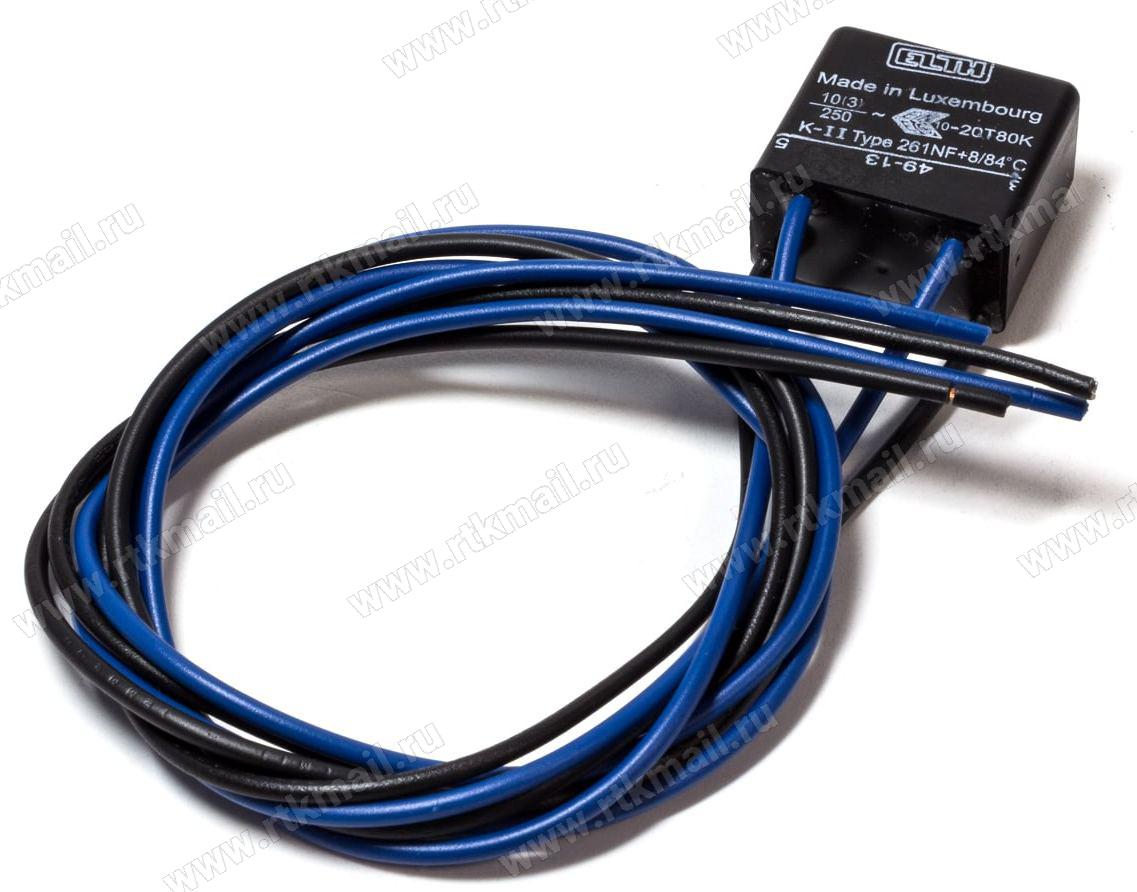 0, back to bed, drank some hot lemon water, feeling sweaty ice pack on back. 10 pm temp 97.7, stomach cramping, mild headache, still coughing. Diarrhea and stomach cramping all night. May be from lemon water too much alkalinity for my stomach. At least I tried it. Trying to avoid Tylenol to see if temp will regulate.
0, back to bed, drank some hot lemon water, feeling sweaty ice pack on back. 10 pm temp 97.7, stomach cramping, mild headache, still coughing. Diarrhea and stomach cramping all night. May be from lemon water too much alkalinity for my stomach. At least I tried it. Trying to avoid Tylenol to see if temp will regulate.
Sat. 4/4 (Day 18)
7:25 am 98.1 temp, stomach cramping, probably from lemon water, diarrhea, coughing when upright, took zpack at 9:30 am, still feeling ok, no need for Tylenol yet. Top of nose itching and eyes itchy, especially left eye and top of nose on the left. Ate some toast and boiled egg. Feeling tired after sitting up for a couple hours. 12:00 napped. Woke up with red hot face, hands and feet freezing! Temp at 3:30 98.8, still not taking Tylenol!! ate an orange, sitting up right as much as possible, ate some lunch, drank some pedialyte slush, watching tv for the first time in weeks, still coughing when talking. If sitting calmly and not talking not to much coughing. Ate some dinner, very tired and weak, 9:20 temp 98.4, going to bed, woke up at 3am, temp 96.0, achy, Read a bit, ice packs for sore back and fell back to sleep.
Ate some dinner, very tired and weak, 9:20 temp 98.4, going to bed, woke up at 3am, temp 96.0, achy, Read a bit, ice packs for sore back and fell back to sleep.
Sun. 4/5 (Day 19)
Woke up at 8 am, feeling better!! Drinking tea, temp 98.7, no Tylenol since Fri at 1:00 trying not to talk as triggers coughing. Still can’t smell or taste. Back spasms, ice packing. Took last zpack pill at 10:30 am and used inhaler. Feet and hands cold, put slippers on and more blankets. Ate some breakfast, fresh orange, neighbor made some fresh juice for us. Still can’t taste or smell!! Temp 98.5 at 1:00pmwatched church online all morning. Worship and the messages so good for my soul and spirit :pray::skin-tone-3:, cough attack if talking or walking or go upstairs. Ate some lunch, resting, temp 98.8 @3pm , rested and tried not to talk so less coughing, eyes and nose still itching, ice packed swollen itchy eyes, ate dinner, 11:30pm temp 97.7, back to bed.
Mon 4/6 (Day 20)
Temp 97. 2 at 7:45 am, drinking tea, itching eyes and nose, no appetite, no taste or smell, 11:00 ate an orange, drank some fresh squeezed veg/fruit juice from neighbor. Resting, tried FaceTiming family, makes me cough. I more talking, let lungs rest! Rest and watch tv. Ate some lunch, more rest, less coughing if I stay lying down, neighbor brought veggie soup for dinner. Can’t taste best very satisfying and warm and soothing. Temp at 9:15 pm 98.0, going to bed.
2 at 7:45 am, drinking tea, itching eyes and nose, no appetite, no taste or smell, 11:00 ate an orange, drank some fresh squeezed veg/fruit juice from neighbor. Resting, tried FaceTiming family, makes me cough. I more talking, let lungs rest! Rest and watch tv. Ate some lunch, more rest, less coughing if I stay lying down, neighbor brought veggie soup for dinner. Can’t taste best very satisfying and warm and soothing. Temp at 9:15 pm 98.0, going to bed.
Tues 4/7 (Day 21)
Temp 97.4 at 7:45 am, drinking warm tea, still no taste or smell. Mild headache, cough seems a bit less. No talking is best. Teleconference with primary care Dr at 10 am, prescribed steroid inhaler for lungs, singular for allergies, rest, call office if symptoms get worse (fever/cough), stay home until 100% better and no symptoms. Wear mask, if have to go in public. Could take 2-6 more weeks Of taste and smell do not return will send me to ENT., ate some breakfast, nose and eye itching a lot, 11:30 temp 98. 1, resting.
1, resting.
Process to get tested
I make another request for Dr to call, immediately suggests testing for virus with symptoms. But since it was a phone appt Dr could not recommend testing, suggested calling Urgent Care. Urgent care wouldn’t see me, suggested calling a hotline (can’t remember who it was) they suggested going to ER. ER won’t take you without a Dr referral. Called Urgent care again, suggested going to Hosptial fever tent. At this point I was giving up. Hannah my daughter insisted I get in the car and go to the fever tent. I went kicking but glad I did! Fever tent requires Dr referral. I have no primary doctor!!! By the grace of God the fever tent took me (I’m sure I looked like death) Evaluated me and said since I have no primary Dr I had to first go to Urgent Care to be evaluated by a Dr. Very frustrated!!! ER called Urgent care to take me. Urgent care tested for all flu and came back negative so tested for covid 19 since I had all the symptoms and no flu. Prescribed doxycycline incase covid came back negative (could take up to 7 days for results) and possible infection, and inhaler. Never got to the doxycycline as I was too sick the next few day’s with fever and body aches and delirium, Inhaler helped a little. Symptoms worsened and now add stomach cramping and loud digestive gurgling, diarrhea and dry heaves. Don’t remember too much those days. 2 days after covid 19 test
Prescribed doxycycline incase covid came back negative (could take up to 7 days for results) and possible infection, and inhaler. Never got to the doxycycline as I was too sick the next few day’s with fever and body aches and delirium, Inhaler helped a little. Symptoms worsened and now add stomach cramping and loud digestive gurgling, diarrhea and dry heaves. Don’t remember too much those days. 2 days after covid 19 test
(Sun, Mar 29) Dr called with positive results. Suggests rest and Tylenol and inhaler unless breathing worsen. 2 days later no improvement, fever and cough getting worse, so reached out to Urgent Care Dr and after 2 weeks of symptoms and not improving urgent care Dr sent me to ER for further tests
(April 1) ER At Mission Hospital: walking into the ER alone with my daughter sitting in the car worried about me, both of us wondering if I might not leave and this may be it for me. Such a scary feeling yet I prayed for Gods will to be done and I was at peace whichever way this goes. They ran many tests , xrays, ekg, blood work, urine test, vitals, along with an IV which helped a lot with my energy level for a short time. Blood pressure very high and dehydrated. temp up, oxygen low, ER Dr diagnosed with pneumonia in one lung and prescribed zpack and Tylenol for fever. Oxygen level Ed at 98%, sent home to continue battling the symptoms with rest, antibiotics, hydration, Tylenol for fever and only to return if breathing gets worse. Fever and body aches continued a couple more days, very up and down. Some days you think you are improving and then you take 10 steps back.
They ran many tests , xrays, ekg, blood work, urine test, vitals, along with an IV which helped a lot with my energy level for a short time. Blood pressure very high and dehydrated. temp up, oxygen low, ER Dr diagnosed with pneumonia in one lung and prescribed zpack and Tylenol for fever. Oxygen level Ed at 98%, sent home to continue battling the symptoms with rest, antibiotics, hydration, Tylenol for fever and only to return if breathing gets worse. Fever and body aches continued a couple more days, very up and down. Some days you think you are improving and then you take 10 steps back.
Copyright © 2021 KFSN-TV. All Rights Reserved.
Why does my normal body temperature always seem to be lower than 98.6 degrees? By how much do normal human body temperatures vary?
When the German physician, Carl Wunderlich, first reported 37 degrees Celsius (or 98.6 degrees Fahrenheit) as the average human body temperature in 1861, he claimed to have drawn his conclusion from more than a million armpit measurements of 25,000 patients.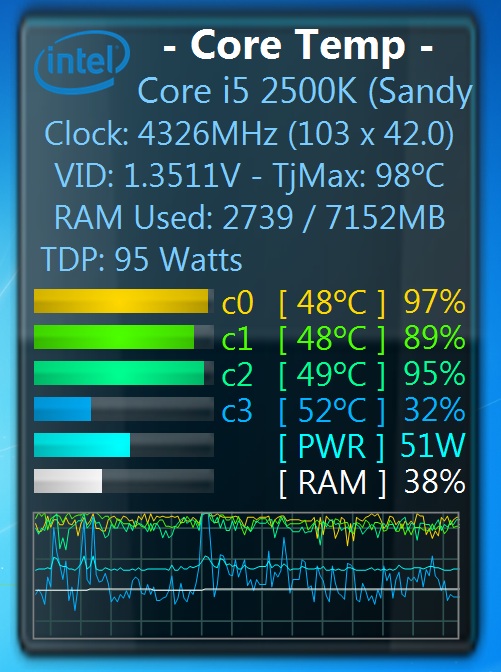 As unlikely as that sounds, it’s true that “normal body temperatures” are largely based on observation, and not any comprehensive theory.
As unlikely as that sounds, it’s true that “normal body temperatures” are largely based on observation, and not any comprehensive theory.
In fact, normal body temperature not only varies between individuals, but also flutters within the same person with time of day and age, usually between 96.9 °F and 100 °F.
If you measure your own temperature at different parts of the body, say in your mouth and under your arms, you’ll notice that the temperatures are different. The general rule is that the thinner a body part is, the less contact it has with the outside environment, and therefore the higher temperature you’ll observe.
As with all other mammals, humans maintain a relatively constant temperature by breaking down carbohydrates, proteins and fats for energy, much like a power plant that burns coal for energy. The process occurs inside our cells, where oxygen, water and nutrients chemically react to produce carbon dioxide, energy and heat. That heat is then absorbed by blood and distributed throughout the body via a network of veins, arteries and capillaries.
The elasticity of those capillaries plays a central role in our ability to maintain constant body temperatures. When there’s too much heat in the body, our capillaries automatically expand and increase the blood flow to the skin, allowing the excess heat to transfer to the air. This is why people become flushed after working out. Conversely, when we don’t have enough energy to balance out the heat loss, capillaries narrow to slow down the blood flow and therefore minimize energy escape.
However, not all fluctuations of our body temperature fall under the control of blood vessels. For example, you are likely to have a higher temperature right after a 100-meter sprint than when you are fast asleep. Intense physical activities temporarily boost your metabolic rate as your body burns more fuels to balance your energy consumption.
Body temperatures wax and wane with hormone levels, too. That’s why a woman’s basal body temperature, or her temperature on waking after a normal night’s sleep, is often used as an indicator of ovulation. Characterized by the surge of luteinizing hormone, a kind of hormone needed for proper reproductive function, ovulation usually increases basal body temperature by 0.4 °F to 1 °F.
Characterized by the surge of luteinizing hormone, a kind of hormone needed for proper reproductive function, ovulation usually increases basal body temperature by 0.4 °F to 1 °F.
Women also tend to have higher rectal body temperatures, or temperatures taken directly inside the body cavity, than men, according to a 2001 study by a group of Dutch scientists. They largely attributed the difference to women’s reproductive cycle, which may in turn explain why men and women have slightly different ways to maintain their body temperatures. Other possible explanations include different abilities to contract blood vessels and differences in resting metabolic rates.
Meanwhile, controlling body temperatures has recently emerged as a potential treatment for stroke. Clot-causing cells, the main culprit for blocking blood vessels and inducing stroke, were found to be less active at lower temperatures. The commonly accepted target temperature is now set at 91.4 °F, or 33 °C, but clinical trials are still underway in the search for optimal conditions for treatment.
While those treatments require a change in body temperature, it is generally true that a healthy person will have a fairly constant body temperature. In fact, it’s so important that your body spends 90 percent of its metabolic energy to make very sure that your temperature is as close to 98.6 °F as possible. So, even though you may feel hot or cold, or worry that your body temperature isn’t 98.6 °F all the time, rest assured, your body is working very hard to maintain that temperature.
90,000 Sevastopol has the highest rate of crime growth in the country – Ministry of Internal Affairs
2020-10-22T11: 06
2020-10-22T11: 06
https://cdn2.img.crimea.ria.ru/images//society /20201022/1118857273/V-Sevastopole-samoy-bolshoy-temp-rosta-prestupnosti-v-strane–MVD.html
https://cdn2.img.crimea.ria.ru/images//111817/56/ 1118175664.jpg
RIA Novosti Crimea
https://crimea.ria.ru/i/ria_logo-blue.png
RIA Novosti Crimea
img.crimea.ria.ru/images//111817/56/1118175664.jpg” data-preview=”/images/” data-description=”Сотрудник полиции” data-title=”В Севастополе самой большой темп роста преступности в стране – МВД” data-mediadate=”22.10.2020″ data-copyright=”© РИА Новости Крым. Дмитрий Макеев”/>
SEVASTOPOL, October 22 – RIA Novosti Crimea. Sevastopol became the leader among the regions of Russia in terms of crime growth rates in 2020. This follows from the report of the Ministry of Internal Affairs of the Russian Federation.
Two Crimeans received almost 24 years for the sale and production of drugs According to the document, in Sevastopol, the growth rate of registered crimes was 39.6%, and unsolved crimes – 59.1%. At the same time, Sevastopol is in first place in the country and in terms of the rate of crime detection. In 2020, the growth rate of the number of identified persons who committed crimes amounted to 21.1%.
After Sevastopol, the second and third places in these ratings are also occupied by St. Petersburg and the Smolensk region, the Chuvash Republic and the Jewish Autonomous Region, Ingushetia.
In the country as a whole, for 9 months of 2020, the total number of registered crimes increased by 1.2%.
“This is mainly due to an increase in the number of criminal acts using IT technologies. In the reporting period, they were committed by 77% more than a year ago, including using the Internet – by 93.2%, with the help of mobile communications – by 97.7%, “the press service of the Ministry of Internal Affairs of the Russian Federation said.
However, the number of crimes against the person in comparison with last year decreased by 6%, the number of robberies decreased by 19.2%, robberies – by 14%, thefts – by 2.7%, and the number of crimes in the domestic sphere – by 8 ,nine%.
90,000 OPEC raised the estimate of oil demand in 2021 by 120 thousand bpd, to 96.6 million bpd, due to the revision of demand in 2020, the growth rate is unchanged
OPEC in its June report revised the oil consumption indicators in 2019 and in 2020 – by 2019 the indicator was reduced by 20 thousand.b / d – up to 99.97 million b / d, and for 2020 the estimate has been increased, from 90.51 million b / d to 90.63 million b / d (by 120 thousand b / d), follows from the new report organizations.
Taking into account the preservation of the forecast for the growth rate of oil demand in 2021 in the amount of 5.95 million bpd, OPEC now expects that in 2021 oil consumption in the world will amount to 96.58 million b / s).
The forecast for the first quarter of 2021 was revised slightly lower due to the deterioration of indicators in the OECD countries of the Americas and Europe, however, the April indicators in these regions and the improvement in the situation with mobility due to the easing of quarantines and the opening of borders caused an increase in the estimate for the second quarter of 2021, which practically compensated for the deterioration in Q1 data.
Data from non-OECD countries have been improved, mainly due to positive indicators in the Middle East in the 2nd quarter.
OECD demand is expected to grow by 2.7 million bpd in 2021, mainly in the second half of the year. The main growth in demand will fall on the American OECD countries, led by the United States, in connection with the recovery in the consumption of motor fuels and light and middle distillates, but in 2021 the demand in the region will not recover to the pre-pandemic level, according to OPEC.
Non-OECD countries will increase oil consumption by 3.3 million b / d, mainly China, India and other Asian countries.
Thus, OPEC analysts lowered the estimate of demand in the first quarter of 2021 by 360 thousand bpd – to 93.29 million bpd, but for the second quarter the forecast was raised by 470 thousand bpd – to 94.79 million bpd s, in the third quarter consumption will be 280 thousand b / d higher than the May expectations – 97.9 million b / d, and in the fourth quarter by 80 thousand b / d higher – 99.74 million b / d, which almost corresponds to the level 2019.
Preliminary data show that commercial oil reserves of OECD countries in April decreased by 6.4 million barrels to 2.962 billion barrels, which is 160 million barrels lower than a year earlier and 34 million barrels higher than the average level for 2015-2019 years (an indicator of the effectiveness of the OPEC + transaction).
At the same time, oil reserves decreased over the month by 13.6 million barrels – to 1.475 billion barrels (now 8 million barrels lower than in 2015-2019), and oil products – increased by 7.2 million barrels, to 1.487 billion ( now 43 million barrels higher than in 2015-2019).
No. 659-RP On accelerating the pace of construction of objects of the 3rd transport ring
GOVERNMENT OF MOSCOWP R E M L E R
R A S P O R Y E N I E
June 22, 1998 N 659-RP
Accelerating the pace of construction
objects of the 3rd transport ringIn accordance with the decree of the Moscow Government dated 01/13/98
N 19 "On the continuation of the design and construction of priority
sections of the inner-city ring highway (3rd ring) "
general designer - Moskomarkhitektura and its
sub-designer of OJSC "Corporation" Transstroy "by order of LLC
"Organizer" on the site from st.Vavilov to MIBC "Moscow-City"
projects have been developed for the construction of 2 oblique overpasses with an 8-lane
motorways with the Small Ring of the Moscow Railway,
construction of a new road bridge across the Moskva River with
preliminary construction of the Andreevsky railway bridge on
new alignment, construction of an open-cut tunnel, above
railway tracks under Gagarin Square in the section from the river
Moscow to st.Vavilov, intersection in 3 places in the area of the stadium
"Luzhniki" railway embankment for the construction of pedestrian
crossings and road trains, the use of special production methods
works on the construction of an automobile overpass over a length of more than 2000 m
along the railroad embankment.
The implementation of these projects required the installation of temporary
railway bypasses built on high embankments, application
special expensive methods of work production, payment
numerous "windows" in the movement of trains, the sequence in
production of works (construction of a road bridge only after
construction of a railway bridge on a new axis; building
railway overpasses after the construction of railway bypasses).In order to reduce investment for the construction of this section of the 3rd
transport ring, accelerating the pace of construction of individual
facilities, reducing the time for commissioning facilities, which will bring closer
opening of car traffic on this site:
1. Accept the proposal of the Moscow Railway on a temporary
closure of train traffic on the section of the Small Ring from the station
"Kanatchikovo" to the station "Presnya" for a period of 15 months with compensation
cost of re-runs of trains by paying for reconstruction
Krasnoselsky automobile overpass at the expense of the estimate for
construction of the 3rd transport ring.2. Moskomarkhitektura together with OJSC "Corporation" Transstroy "and
Moscow railway to develop in July this year.
feasibility study of the feasibility of temporary closure
train traffic on the section Kanatchikovo station - Presnya station in
which to provide:
- reduction in the cost of re-runs of trains;
- cancellation of construction of temporary bypasses;
- a change in the direction of reducing the cost of methods of production of work;
- reduction in the cost of reconstruction of the Krasnoselsky overpass;
- reduction of the construction time of individual objects and
approaching the date of putting the highway section into operation, etc.NS.
3. Functions of the customer for the development of a technical and economic calculation
to assign to LLC "Organizer".
4. LLC "Organizer" together with OJSC "Corporation" Transstroy "and
institute "Mosinzhproekt" to develop object-by-object projects of the organization
construction with combined schedules of relocation of engineering
communications, liberation of territories from buildings, structures, green
plantings, etc., the organization of urban transport, timing
start and end of work.5. To the Department of Economic Policy and Development of Moscow
invest in the development of a technical and economic calculation in
the account of funds allocated for the construction of this section of the 3rd
transport ring.
6. Clause 9.3 of the order of the Prime Minister of the Moscow Government dated
07/02/97 N 689-RP "On the closure and reconstruction of Krasnoselsky
overpass "shall be considered invalid.7. Control over the implementation of this order shall be entrusted to
First Deputy Prime Minister of the Government of Moscow B.


 ”
”
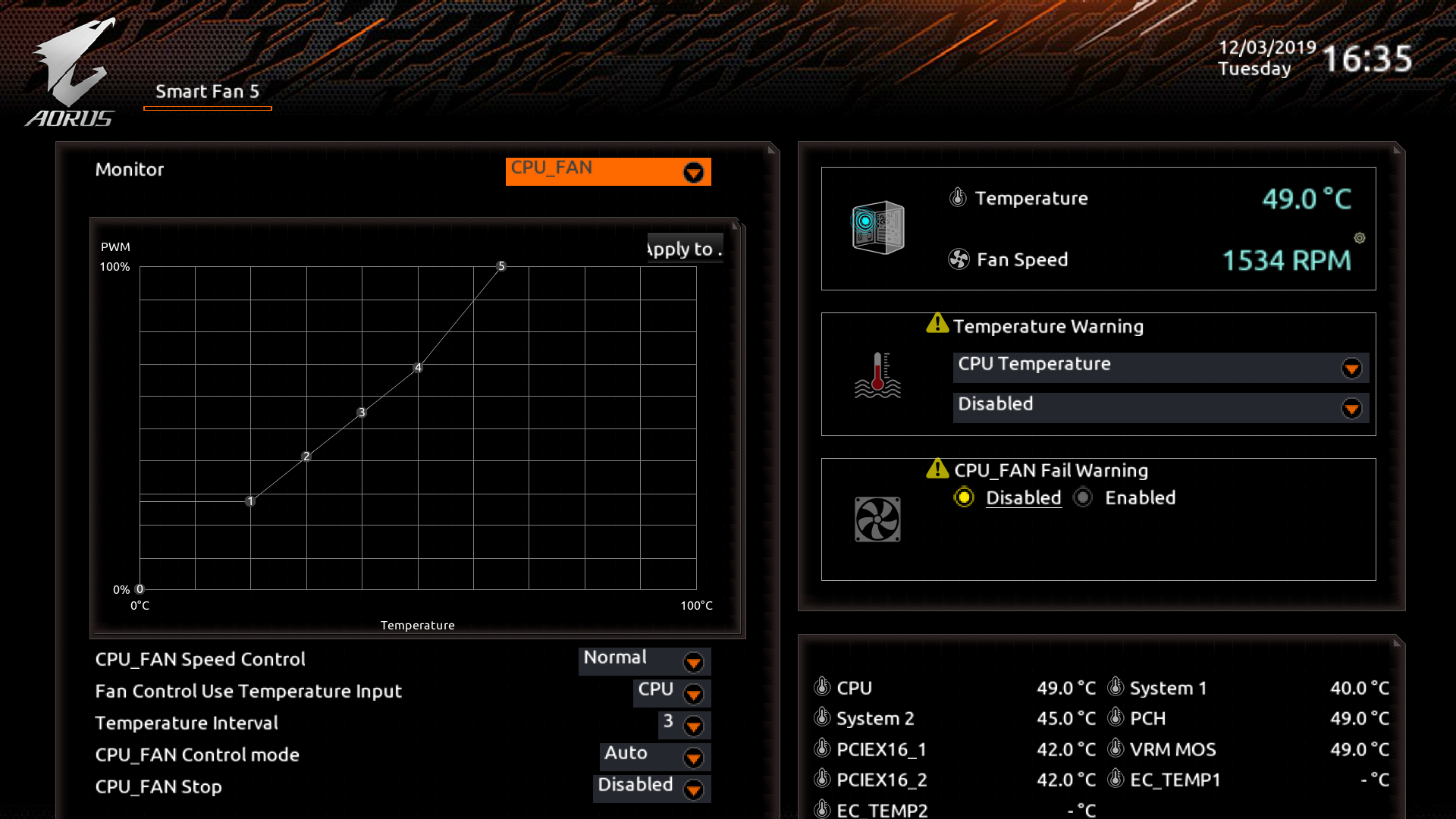 Be sure to read and follow the instructions to obtain an accurate temperature. The information may also include how the results of the device correlate with the results from other methods of taking a temperature.
Be sure to read and follow the instructions to obtain an accurate temperature. The information may also include how the results of the device correlate with the results from other methods of taking a temperature. For example:
For example: 6–104.6
6–104.6